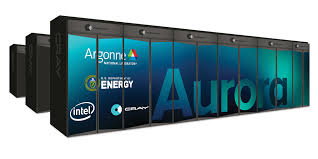Intel Federal LLC to Propel Supercomputing Advancements for the U.S. Government
Intel Federal LLC wins $19 million contract to apply new approaches to extreme-scale computing research and development.
Research and development will cover a number of areas including memory research and how to achieve more reliable and energy-efficient processor technology.
Efforts will align with the U.S. Government’s commitment to using high performance computing to solve numerous societal challenges involving energy, security and the economy.
With the U.S. Government increasingly using high-performance computing (HPC) to address current and future national challenges, Intel Corporation announced it has been awarded two subcontracts totaling $19 million with the U.S. Department of Energy (DOE). As part of these two awards, Intel® Federal LLC, a wholly owned subsidiary, will be a major participant in the Lawrence Livermore National Security, LLC (LLNS) managed Extreme-Scale Computing Research and Development “Fast-Forward” program aimed at driving advancements in exascale computing.
The DOE has been a leading developer of supercomputing technology for a broad range of critical applications in the space of national security, economy, energy resources and consumption. The “Fast-Forward” program will harness the talents of the national laboratories, academia and U.S. industry to develop the next generation of HPC technologies.
Intel Federal, which offers the U.S. Government access to the breadth and depth of Intel’s capabilities in research, development, prototyping and engineering services, will combine innovative and traditional activities to achieve improved resilience on next-generation, energy-efficient scalable processor technology. Intel’s memory research, in particular, will evaluate how next-generation memory architectures, combined with processing power, provide optimal, energy-efficient performance for a broad range of DOE applications and other HPC workloads.
“High-performance computing is a transformative technology that will allow current and future generations of scientists and engineers to develop breakthrough advancements to address our most pressing societal issues.” said David Patterson, president of Intel Federal LLC. “This is a great example of how public-private partnerships will significantly help move high performance computing forward and push the boundaries of innovation.”
Intel aims to achieve Exascale-level computation by the end of the decade, and has made significant investments in areas that will increase its capabilities. These include development of new generations of Intel Xeon processors with entirely new Intel® Many Integrated Core architecture based Intel Xeon Phi co-processors. In addition, Intel’s recent acquisitions of Infiniband and interconnect assets from QLogic and Cray will help dramatically increase the speed of data delivered on Exascale-class platforms.
“The Exascale level of performance will open new predictive scientific simulation possibilities that will impact the lives of every human being. From long-term weather forecasting and developing drugs for the most severe diseases to analyzing new ways to use energy efficiently, science and engineering researchers need much more compute capacity than is available today in Petascale systems. The challenge is to deliver 1,000 times the performance of today’s Petascale computers with only a fraction more of the system’s energy consumption and space requirements. Exascale systems are critical for achieving the Department’s goals – to ensure national security and promote scientific advancements.” – said Dr. William J. Harrod, Division Director of Research in the DOE Office of Science’s Advanced Scientific Computing Research. “The primary objective of the Department’s FastForward effort is to begin the long term R&D necessary to impact systems at the end of the decade. The development of entirely new high performance, energy-efficient processor and memory technologies are essential for developing Exascale systems and Intel is initiating highly innovative designs for these components.”
“Within the next five to ten years, we anticipate that our partnerships with Intel and others in the FastForward program will produce breakthroughs that will have profound impacts for the HPC community.” – said Thuc Hoang, National Nuclear Security Administration’s Office of Advanced Simulation and Computing.

